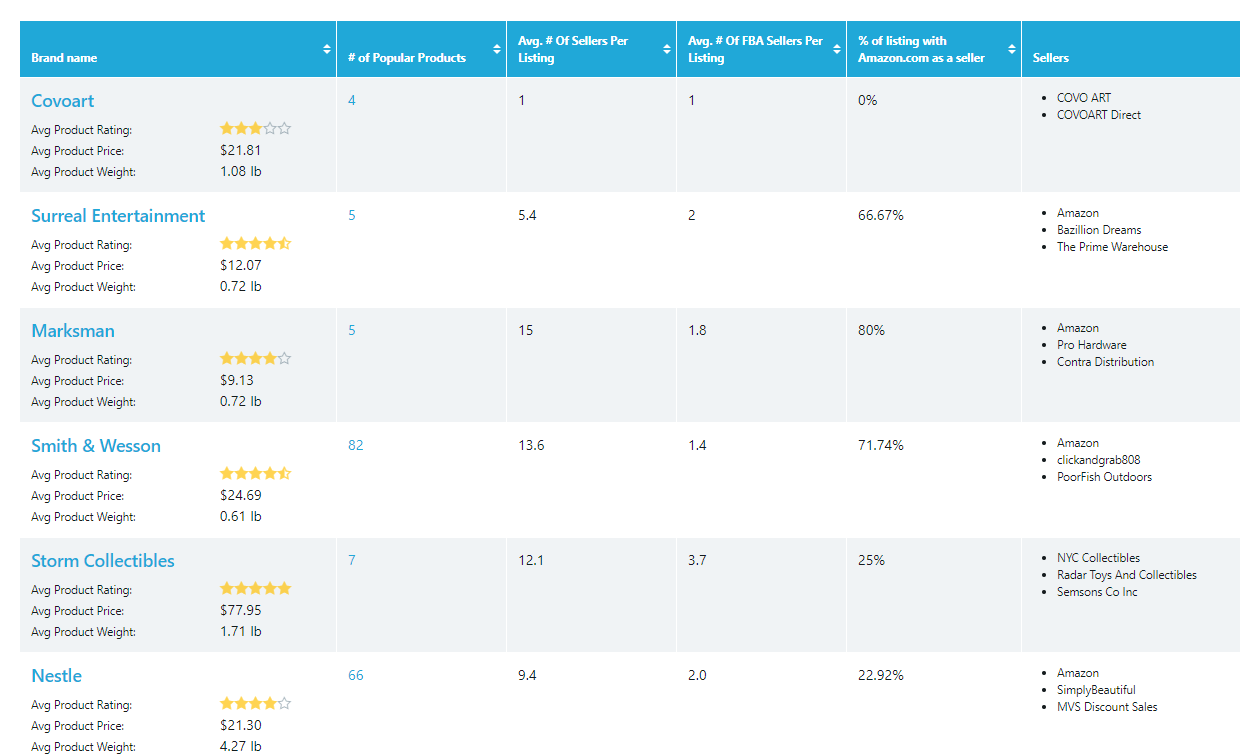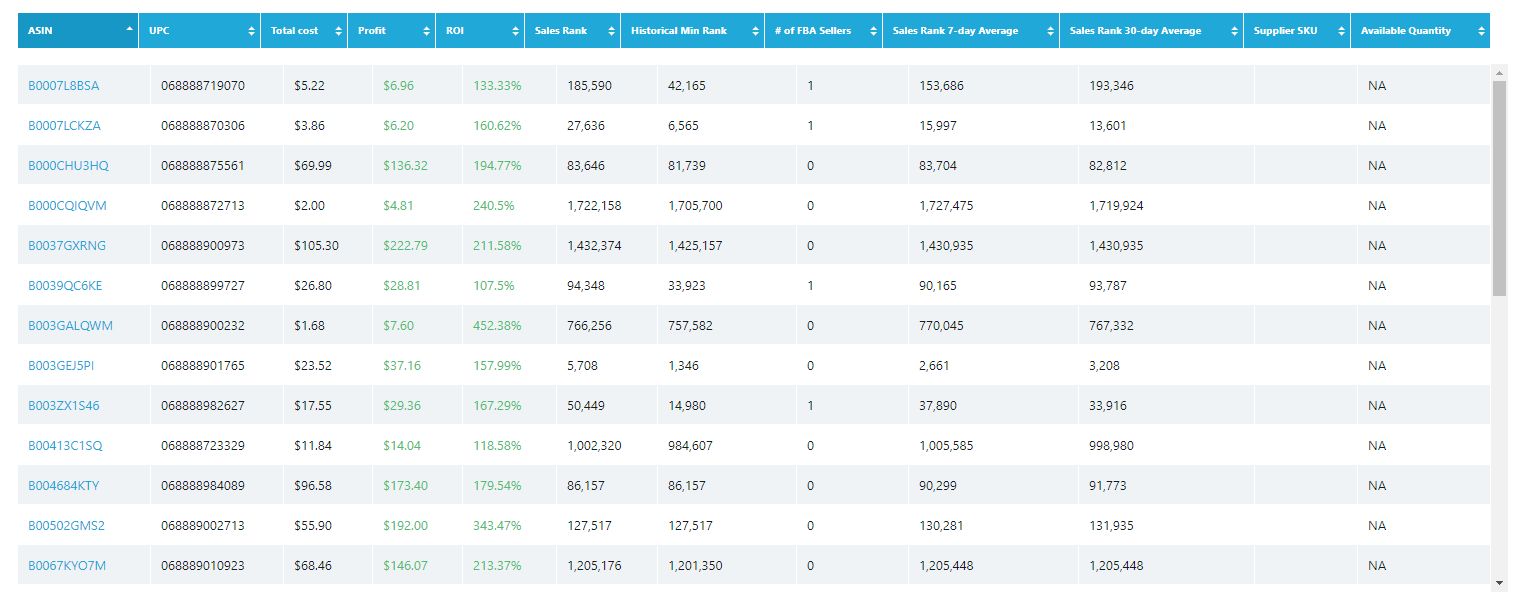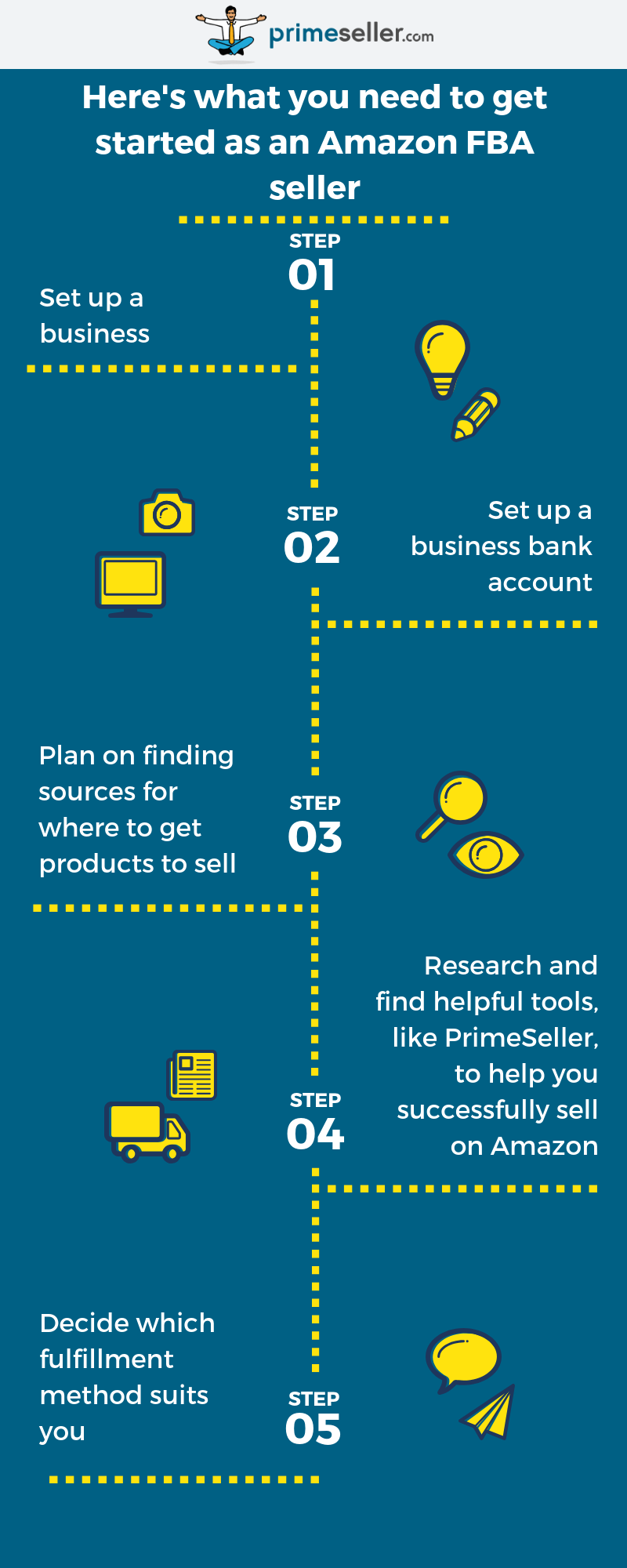Welcome readers! Thank you for joining me on my journey to go from 0 to $5,000 profits per month by selling on Amazon. This blog post is all about what you’ll need to know to start selling on Amazon as a beginner.
In theory, selling on Amazon is very simple, really. You buy products, list them on Amazon, and sell them to the nearly 300 million customers who use Amazon each month. But there is a lot to think about and consider before you even purchase your first product to sell.
However, there are a few details you need to take care of beforehand.
Here’s what you need to get started:
1. Set up your business
I am going to sell on Amazon as a business. Now, it’s not required that you sell on Amazon as a business; you can set up a personal seller account and use a personal bank account. But it’s best to have a business for working with suppliers, as most manufacturers and wholesalers do not sell to individuals.That being said, the first thing I am going to do is set up my business. So if you want to follow along you’ll need to set up your business—which may require getting a state registration, as well as getting a Federal Tax ID, and maybe a business license—depending on your city. We recommend having as business as some manufacturers and suppliers won’t sell directly to individuals. I’ll talk more about that in a future video that is all about sourcing products.
2. Open a bank account
When you sell on Amazon’s platform through an Amazon seller account, they collect the money from the customer, then transfer it to you, so you’ll need a bank account for Amazon to make deposits. It’s ideal if you use a business bank account.
3. Find products
Next, you’re going to need a source of products. I’m going to use wholesalers. In my sourcing video, I’ll go through why I’m using wholesalers instead of using drop-shippers or manufacturers to make and brand my own lines. Plus, I’ll walk you through how to line up some great sources. For now, just keep the products in mind as something you’re going to need as you get going.
4. Use the right tools
I recommend having a tool to help you find the top selling items on Amazon. Now I know I’ve only been doing this a short while, but I can attest that having a tool will help you save time and make better decisions. For the case study, obviously, I’m using SupplySpy. And I’ve played around with the software a bit. It features popular Amazon brands that will help me save time researching the best products to buy and sell on Amazon. This is just one of the tools the software offers.

SupplySpy also has a feature called Bulk Analyzer. This feature allows you to analyze product lists you get from wholesalers—mind you, wholesaler lists can be 20,000 or more products deep. SupplySpy takes your uploaded list, compares actual sales data from Amazon, and spits out a sortable product-by-product report showing all kinds of details like how many sellers there are, average selling prices, exact profit projections based on your listed price and costs, and what the return on investment is for each product. I’m telling you it makes the product selection process a piece of cake! (And it’s THAT process that is the real key to success on Amazon). So yeah. You’re going to want either that or an otherwise exceptional strategy for picking profitable products to sell.

5. Decide which fulfillment method works for you best
The next question you’ll want to answer is on how to fulfill your orders. Fulfillment is simply the process of getting the products into the hands of the customers after they’ve ordered. Amazon offers two options for fulfillment: FBM which stands for fulfilled by the merchant, and FBA which is fulfilled by Amazon.
There are benefits to both fulfillment options. For example, fulfilling orders yourself (FBM) provides more control and flexibility. However, during this challenge, I’ll be fulfilling via FBA.
There are a few reasons that FBA appeals to me specifically. First, I don’t have a lot of room at home or time on my hands to store, pack, and ship products on a one-by-one basis to each customer as they order. So sending bulk shipments of products to Amazon warehouses for them to fulfill is the way to go for me.
Second, I could never compete directly with the 2-day delivery service Amazon to more than 80 million Amazon Prime subscribers. But guess what, when I do FBA, my products are actually eligible for Amazon Prime. And although Amazon bills FBA merchants for the shipping, I would have to pay for shipping anyway, and Amazon’s massive volume of shipments qualifies them for much better rates than I’ll ever get.
Finally, by doing FBA, Amazon is fulfilling the order. You will be able to remove most of the negative seller feedbacks. This is because most negative feedback is related to general service and fulfillment. By doing FBA, Amazon is responsible for both!
And, for getting started as an Amazon FBA seller, that’s about it:
- Set up a business
- Set up a business bank account
- Plan on finding sources for where to get products to sell
- Research and find helpful tools, like SupplySpy, to help you successfully sell on Amazon
- Decide which fulfillment method suits you.

Be sure to check my blog for updates as I’ll be sharing links and tools and other info. that I hope will be really helpful. Also, find us on Youtube at SupplySpy. I’ll be sharing information and vlog updates on how my journey is going!
